The political roots of Mexican Texas can be found in several of the early documents. In this section, you will learn about some of those documents and how they shaped Mexican Texas. One of the most important documents was the Constitution of 1824, which is also called the “Federal Constitution of the United Mexican States of 1824.”
![]() Click on the document below to learn more about some of the provisions of the Constitution of 1824.
Click on the document below to learn more about some of the provisions of the Constitution of 1824.
Main Provisions of the Constitution of 1824
|

Click here for the complete text of the Constitution of 1824.
The Constitution of 1824 also merged the Spanish provinces of Coahuila and Texas into one, Coahuila y Texas. This meant the Constitution of 1824 was the first constitution of Texas.
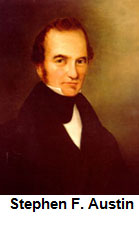 |
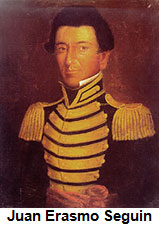 |
There were prominent Texans who contributed to the framing of the Constitution of 1824: Stephen F. Austin worked with Mexican leaders who wrote the constitution, and Juan Erasmo Seguin, a rancher and San Antonio politician, represented the interests of Texas during the writing of the constitution.
The Constitution of 1824 was written similarly to U.S. Constitution. Read below to learn more about the similarities and differences of each Constitution.
The Constitution of 1824 |
|
| Similarities to the U.S. Constitution | Differences from the U.S. Constitution |
|
|
Immigration became a significant issue soon after Mexico won its independence from Spain. Mexico needed to protect its borders and defend itself against the illegal immigration of American settlers. Mexico created laws that would help them regulate the colonization of Mexico.
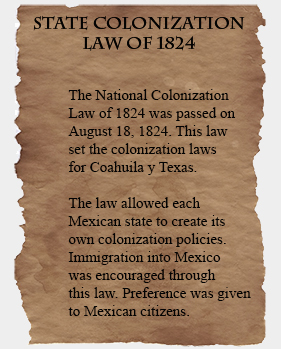
To read more about the National Colonization Laws of 1824, click the link here: National Colonization Laws of 1824.
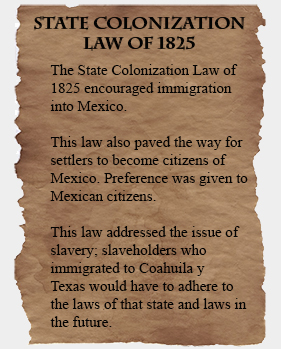
To read more about the State Colonization Law of 1825, click the link here: Colonization Law State of Coahuila and Texas 1825
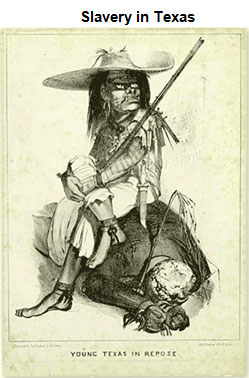
One of the most controversial issues in Mexican Texas was slavery. Mexico was opposed to slavery, although many Americans who lived in Texas owned slaves. This caused tension between Anglo-American settlers and Mexican officials.
Mexico made slavery illegal in 1829, but the Mexican government did little to enforce it. Although Mexico opposed slavery, it did not actively pursue to protect the rights of slaves, or free the black people in Texas.
According to the Texas State Library and Archives Commission, “There were 5,000 slaves in Texas by the time of the Texas Revolution in 1836. By the time of annexation a decade later, there were 30,000; by 1860, the census found 182,566 slaves – over 30% of the total population of the state.”
The rich fertile soil in Texas made slaves valuable to settlers coming to Texas. Settlers who owned farms and ranches profited from using slave labor. Slavery continued in Texas until the Emancipation Proclamation was received in Texas on June 19, 1865.
![]() Read excerpts from each of the three documents below. Click on the correct document which the excerpt was taken from.
Read excerpts from each of the three documents below. Click on the correct document which the excerpt was taken from.
Sources for images used in this section, as they appear, top to bottom: